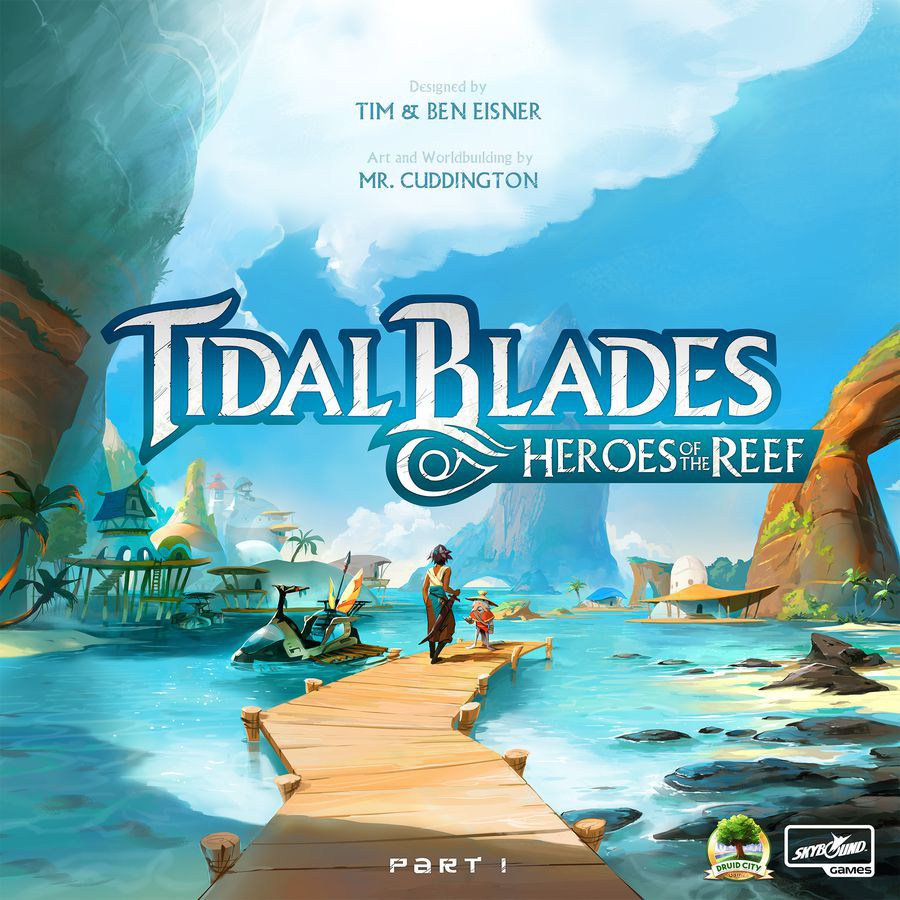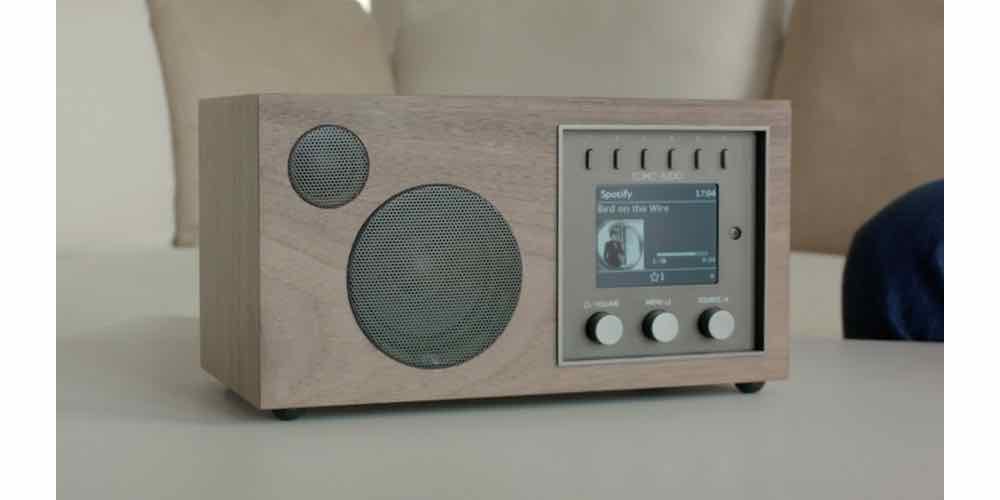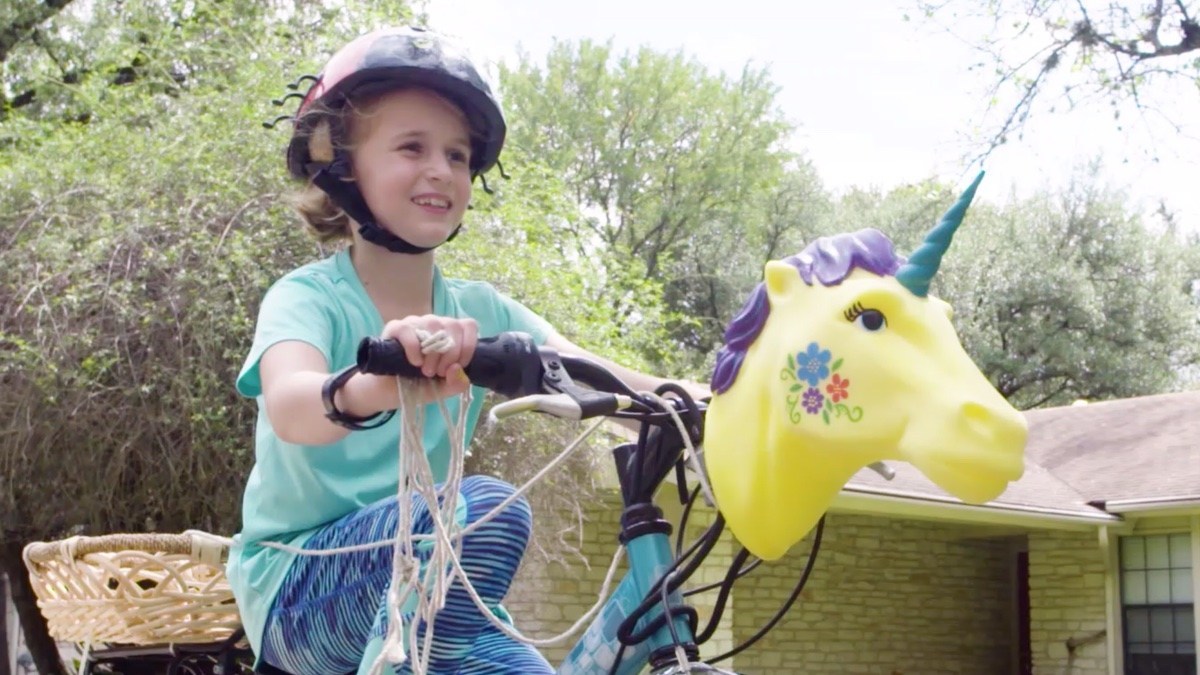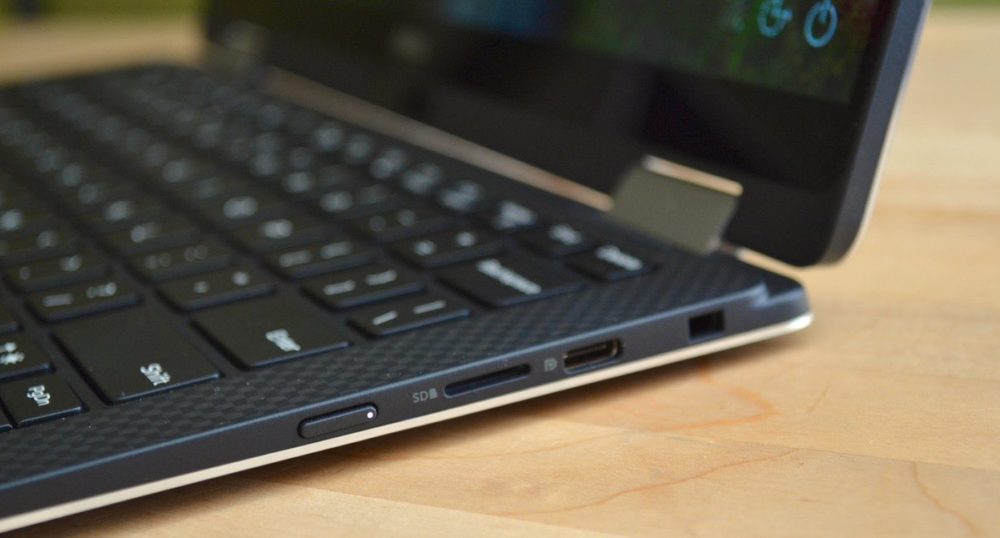Monsters are encroaching on the islands of the reef once again, so it is time for a tournament to select the new Tidal Blades. Will you prevail in the arenas?
What Is Tidal Blades: Heroes of the Reef?
Tidal Blades: Heroes of the Reef is a worker-placement game for 2 to 4 players, ages 14 and up, and takes about 60–90 minutes to play. It’s currently seeking funding on Kickstarter, with a pledge level of $59 for a copy of the game (or $89 for the deluxe edition). The game has a lot of moving parts, but I think kids 10–12 years old who have some gaming experience (and the patience) would be able to handle it; there’s nothing inappropriate for kids in the theme.
New to Kickstarter? Check out our crowdfunding primer, and visit our Kickstarter curated page for more projects we love.

Tidal Blades: Heroes of the Reef Components
Note: My review is based on a prototype copy, so it is subject to change and does not reflect final component quality. The dice in the prototype were stickered instead of printed, and the boards were hand-cut
- 5 Location Boards
- 4 Sets of player components, each containing:
- Player board
- 3 Goal cards
- Character standee
- 4 Energy Discs
- 8 Character cards
- 12 Damage tokens
- Champion Board
- 21 Stunt cards
- 54 Challenge cards
- 24 Market cards
- Elder Tidal Blade standee
- 3 Danger Dice
- Monster Invade Die
- Boat marker
- Round marker
- First Player marker
- 14 Novice Dice (White)
- 16 Initiate Dice (8 Blue, 8 Red)
- 16 Elite Dice (8 Blue, 8 Red)
- 12 Guild Dice (3 per trait)
- 4 Monster cards
- 30 Fruit tokens
- 30 Shell tokens

The first two things you’ll notice about Tidal Blades is that there are a lot of components, and they look great. The artwork for the game is by Mr. Cuddington, who also did a lot of the worldbuilding, and it’s beautiful. The characters and locations look like something out of an animated show and you’ll find yourself wishing you could watch a series about this world.
The game boards are oddly shaped, allowing the artwork and design to dictate the shapes, making for a cool layout on the table, though you may have to experiment a little to get everything lined up—I’m not totally happy with how I laid it out in the photo seen above. The other note is that the game is a table hog—between the six center boards and the four player boards, plus oodles of cards and tokens, it might get a little crowded.

The various dice represent upgrading your skills; novice dice have the four traits, plus a wild and a blank side. Once you upgrade, you start to focus on either the cool colors or warm colors: initiate dice give you better odds for two of the traits but still have one blank face. Elite dice also include two faces that act as either of the two traits, and have no blank faces. Finally, the guild dice are even more specialized, with only one trait represented and some faces that include two of that trait; they also have two wild sides, so you still have a chance of rolling any symbol with them.

Each player has a unique set of character cards that can be unlocked during the game, so the characters are distinguished in more than just appearance. The goal cards are also different, though there are some more similarities and overlaps there. The player boards are identical in function, with four dials that track the traits (Focus, Spirit, Resilience and Synergy), but with the character’s portrait and name prominently displayed in the center.
Druid City Games is the publisher of The Grimm Forest, which also shares a designer (Tim Eisner) and artist, and the quality of the components is excellent, so I’m confident that Tidal Blades will also get a top-notch treatment. If you spring for the deluxe edition, it will include plastic miniatures instead of the cardboard standees, plus a Chronosseum dice tray, wooden energy discs, and plastic shell and squishy fruit tokens. Fancy!
How to Play Tidal Blades: Heroes of the Reef
You can download a copy of the rulebook here.
The Goal
The goal of the game is achieve the highest score by leveling up your traits, completing challenges, fighting monsters, climbing the rankings on the champion board, and accomplishing your secret objective.

Setup
Each player gets a set of player components. All of the dials on the board are set to the lowest value. The four traits correspond to different abilities:
- Focus limits the number of dice you roll
- Spirit makes your stunt cards more effective
- Resilience is used for upgrading dice at the end of the round
- Synergy gives you access to more character cards
The player receives two novice dice (white) and places them in the “active dice” section of their player board; over the course of the game you can acquire up to 6 dice total. The standee and two of the energy discs are placed on the center of the player board; the other two discs will be placed on the Citadel of Time board (see below). Each player also receives 2 fruit and 4 shells.
Shuffle the starting challenges (marked with an “S”) and deal three to each player, shuffling any remaining into the challenge deck. Each player starts with their Shell Shield character card and one other character card (shown in the rules); each player also starts with one randomly drawn secret goal card, which is placed face-down. The other secret goals are returned to the box.
Damage tokens and the rest of the character cards are set nearby.
Choose a starting player and give them the first player marker. There are also some resource bonuses given to the other players.

In the center of the table are several boards:
- The Fold: Place the monster deck (easier monsters on top, harder monsters underneath) and the monster damage die here
- Citadel of Time: Place the challenge deck here, with 5 challenge cards face-up above it. The round marker and danger dice go here, as well as two energy discs per player on the Round 3 and Round 5 spaces.
- Chronosseum arena: Place the stunts deck here.
- Champion board: Each player places one damage token at the bottom of the board.
- Droska Ring arena: Place the market deck here, with 3 cards turned face-up to form the market.
- Lamara Stadium arena: Place the boat token on the starting space, center left.
The Elder Tidal Blade standee is placed on the arena that matches the left-most challenge. The three arenas—the Chronosseum, Droska Ring, and Lamara Stadium—each have a colored space for the standee.
The fruit, shells, and dice are placed nearby.
Gameplay
Tidal Blades is a worker-placement game: you place your energy discs on various places to gain the bonuses there; in addition, whenever you visit one of the islands, you also get that island’s bonus action; at the three arenas, you may also attempt a challenge. Most of the locations have space for only one disc, so once it is taken, nobody else may visit that location until the next round. Your standee always moves to your most recently placed disc.
Unlike most worker-placement games, you my visit an island even if there are no more locations available—your disc is just placed on the island board but not on a specific location on the board, and you’ll get the island bonus action but not the location action.
The bulk of the gameplay takes place during the Day phase, when players visit locations and take actions.

Citadel of Time
The Citadel of Time has two spots, both of which can hold any number of discs. On the left you can train, rolling dice and trying to get matching symbols; you can earn fruit and shells, move up the champion board, or increase a trait, depending on how you roll. Dice used at this location are returned to the “active” side of your board. On the right, you may refresh any number of your dice, moving them from “spent” to “active.”
If you go to the Citadel of Time, you also get to take two challenge cards, either from the face-up cards or off the top of the deck, sliding cards to the left and refilling as needed. Challenge cards have from 1 to 4 trait symbols on them, and also match one of the three arenas.

Chronosseum
The Chronosseum has four spaces: you can gain a blue or red initiate die, a white die and a fruit, or a stunt card from the deck. In addition, the island bonus is an additional stunt card.

You may play stunt cards from your hand at any time during your turn, but only once per turn. Stunt cards give you various bonuses—more challenge cards, dice, resources, and so on—and they’re always tied to your spirit level. The higher your spirit, the more effective the stunt card will be.

The Droska Ring has three locations, where you can gain fruit, 2 shells, or refresh 1 die. The island bonus is that you may buy a card from the market by spending fruit, or gain 1 more fruit.

There are a variety of market cards, costing from 1 to 4 fruit, and they offer various bonuses: you may be able to increase a trait, move up on the champion board, gain dice, or buy resources or cards. The market cards take effect immediately and are discarded. Slide market cards down and refill from the deck as needed.

Lamara Stadium
Lamara Stadium has three locations: you may gain two fruit, two shells and the first player marker, or advance the boat an extra space. The island bonus is to move advance the boat one space clockwise around the outer edge of the board. You gain the printed bonus for every space that you land on, gaining resources, stunt cards, dice, or even increasing a trait.

Challenges
To attempt a challenge, you will need to be at the matching arena. After taking the location action and the island bonus action, you may attempt a challenge card from your hand. Reveal the card, and choose dice from your active dice to roll: you may roll dice up to your current focus level, and you may spend fruit to roll additional dice. You also roll the current danger die—as the rounds progress, you use more difficult danger dice.
You may roll and re-roll any number of times, trying to get one die of each symbol on the card. However, each time you roll, you must also roll the danger die. Each “X” that is rolled will remove one of your current dice and return it to the supply, unless you spend a shell on your shell shield to cancel it.
Once you get all the symbols, you have completed the challenge. You increase the traits shown on the challenge card (one rank per symbol), and then set the challenge card face-up in your player area. All dice that you rolled for the challenge are placed in your spent dice area. If the Elder Tidal Blade is present at this location, you also move up one space on the champion board. Also: any opponents who have their standees at this island will gain 1 fruit as a reward for helping you facilitate your challenge.
If you choose to stop rolling before you complete the challenge, put the card back into your hand and return any remaining dice back to your active dice. For each die that you lost to danger, gain 1 shell from the supply.
Your shell shield has two other effects: you may spend 3 shells from your shell shield to change a die to any face; you may spend 5 shells from your shell shield to increase any trait by 1.

The Fold
Finally, we have the Fold, a dimensional barrier that holds back the monsters … but the Fold is failing, and some monsters are getting through. There are two locations at the Fold, both of which can hold any number of discs and give you shells when you use them. At the Fold, you also attempt to battle monsters.
Each monster card has several symbols on it, indicating what you need to roll to hit it. There are some armored spaces that can only be hit with dice that are a certain level or higher—if you hit these, you also move up the champion board immediately. Fighting a monster is a bit like completing a challenge—you roll your dice and the danger die. You also get a bonus die: each monster has a fighting style that matches one of the three arenas. Depending on how many of that type of challenge you have completed, you will get a bonus die of the corresponding level. You must roll this die in the fight, but it doesn’t count against your focus level.

You use your damage tokens to mark any spaces that you hit; these damage tokens will be worth points at the end of the game. You also get to increase your traits for spaces you hit, just like completing challenges.
If you manage to land the last hit on a monster, you get the kill bonus, moving up two spaces on the champion board. In addition, whenever a monster leaves (either because it is killed or because it moves out of the Fold), any players who have hit the monster will get the reward shown on the monster.
Whenever a monster leaves the Fold, any damage tokens on it are placed next to the Fold for final scoring.
Night Phase
After everyone has used all of their energy discs, the Day ends and the Night phase takes place.
The monster invasion die is rolled once—if the die matches a space with a monster on it, the monster invades. Anyone who has not damaged that monster suffers the penalty shown on the monster card.
Then, move monsters down one space and draw a new monster card.
Discard the leftmost challenge in the Citadel of Time and the bottom market card in the Droska Ring, sliding and refilling.
Each player may upgrade dice according to their Resilience level. Take that number of dice from your spent dice; return each one to the supply and take a die that’s one rank higher, placing it into your active dice. (Note that spent dice that are not upgraded are not refreshed, and you cannot upgrade active dice.)
Return your standee and all discs to your player board.
Move the Elder Tidal Blade clockwise to the next arena.
Advance the round marker. At the start of Round 3 and Round 5, each player gains one energy disc, and the danger die is replaced with the next difficulty level. Also, players get bonuses based on their standings on the champion board: everyone gets one reward based on their rank, and the player who is the highest gets an additional reward.

Game End
The game ends at the end of five rounds. Players score as follows:
- Each completed challenge is worth 2 points
- Each set of challenges from all three arenas is worth 5 points
- Your four traits are worth points if you cross the scoring thresholds
- Players in 1st, 2nd, and 3rd place on the champion board score points
- Everyone scores for the 1-point markers they reached on the champion board
- Each player scores for their secret goal card
- Each player scores 1 point for each of their damage tokens next to the Fold
The highest score wins!
Why You Should Play Tidal Blades: Heroes of the Reef
I was only able to keep the prototype for Tidal Blades long enough for a couple of plays before I had to give it back for its trip to SHUX, but I did enjoy it and look forward to seeing how the final version turns out. Tim Eisner (who designed the game along with his brother Ben) told me they were still fine-tuning things here and there, making tweaks based on playtesting and putting that final polish on everything. Not that the game feels rough—the prototype was pretty impressive, both visually and in terms of gameplay.
I like the mix of worker placement with the dice management and character upgrades. The four traits lead you down different paths, and figuring out your approach is part of the fun. Going after Focus will let you roll more dice for challenges and monster fights, increasing your odds of success without having to roll the danger dice as much. But Resilience lets you upgrade dice, and better dice also increase your odds of success, just in a different way.

If you like stunt cards, then you’ll want to increase your Spirit as quickly as possible, and then spend time getting more stunt cards. Clever use of stunt cards can gain you a lot of benefits that would require more turns to acquire otherwise.
Finally, don’t forget about Synergy: each time you pass a level threshold, you get to draw two of your character cards and pick one to keep. Over the course of the game, you can have up to 4 character cards. Each character has a different mix of them, and unlocking them early in the game can give you a nice advantage, particularly if you pick a combination that meshes with your favorite tactics.
Typically the way you’ll increase traits is by completing challenges and fighting monsters, but there are a few other ways to do it—training at the Citadel of Time, completing a lap at Lamara Stadium, or visiting the Droska Ring market at just the right time. What that means is that even if you have a plan for which traits you want to pursue first, you still have to find the best way to level them up. I also like using shells from my shell shield to level up, but that means I cant use them to change dice values.
Each trait can be worth as many 7 victory points, but that’s only if you invest in it after you’ve reached the maximum trait level of 4. How much time should you spend working on a trait that doesn’t give you any other benefits, particularly if your other traits aren’t leveled up yet?

Moving up the champion board also gives you points, but it’s also valuable because of the bonus effects you get at the beginning of rounds 3 and 5. Players will often look for ways to move up a step or two on the champion board, but it’s like that joke about the bear: you just have to be faster than the other players. Getting to the very top opens up some nicer bonuses, but just being above everyone else is worth 5 points a the end of the game, even if you didn’t climb very high.
At the start of the game, each player only has 2 energy discs, so you have to choose your two turns very carefully. If you don’t get more dice (or have Resilience to upgrade and refresh dice), then you’ll have to spend turns just to refresh dice, because most of the important actions that will score points require you to have dice. Managing your dice is a crucial part of the game; is it better to have fewer, higher-rank dice or more, lower-rank dice?
I do like that everyone gets additional energy discs at the same time. In many worker-placement games, gaining additional workers is one of the best tactics, because the more workers you have, the more you can do. Players who miss out often get left behind. In this case, everyone gets workers at the same time, so your actions are restricted more by how many active dice you have left than the number of energy discs. As the game progresses, the rounds get longer—but you always feel like you could do so much if you had just one more turn.
I like the way that the various elements of the game tie into each other: completing challenges not only scores points but also makes you better at fighting monsters. Fighting monsters isn’t just worth points, but also protects you if they invade. Everyone wants to complete challenges where the Elder Tidal Blade is for extra points, but completing a challenge when your opponent is there gives them more fruit.
Tidal Blades is just jam-packed with cool artwork, tricky choices, and fun gameplay. I enjoyed immersing myself in the theme, and we did feel like competitors in a high-stakes contest, wanting to win but also building camaraderie with our fellow hopefuls, unlocking new abilities as we leveled up our traits. There’s a lot going on in this reef, but it’s worth a visit! For more information or to make a pledge, visit the Tidal Blades Kickstarter page!
Click here to see all our tabletop game reviews.
![]() To subscribe to GeekDad’s tabletop gaming coverage, please copy this link and add it to your RSS reader.
To subscribe to GeekDad’s tabletop gaming coverage, please copy this link and add it to your RSS reader.
Disclosure: GeekDad received a copy of this game for review purposes.







How’s this game compares to Monster Lands?
Hi! I actually am waiting on my copy of Monster Lands that I backed—it should be arriving this week, I think! But since I haven’t played it (Robin Brooks reviewed it for us), I can’t compare the two directly. At first blush, though, it seems like with Monster Lands you use your dice as your workers—you roll them all and then take turns placing them in spots, with the dice values/colors affecting where you can place them and how effective they are. In Tidal Blades, it’s a more traditional worker placement where you put a disk on the location you’re using—but the you roll dice to complete challenges, with a press-your-luck element to the dice rolling because you can keep rolling (and potentially taking damage) until you either finish a challenge, lose too many dice, or decide to stop.
Based on that, I think the gameplay will probably feel quite different between the two games—though of course I’ll know more once I finally break out my own copy of Monster Lands.